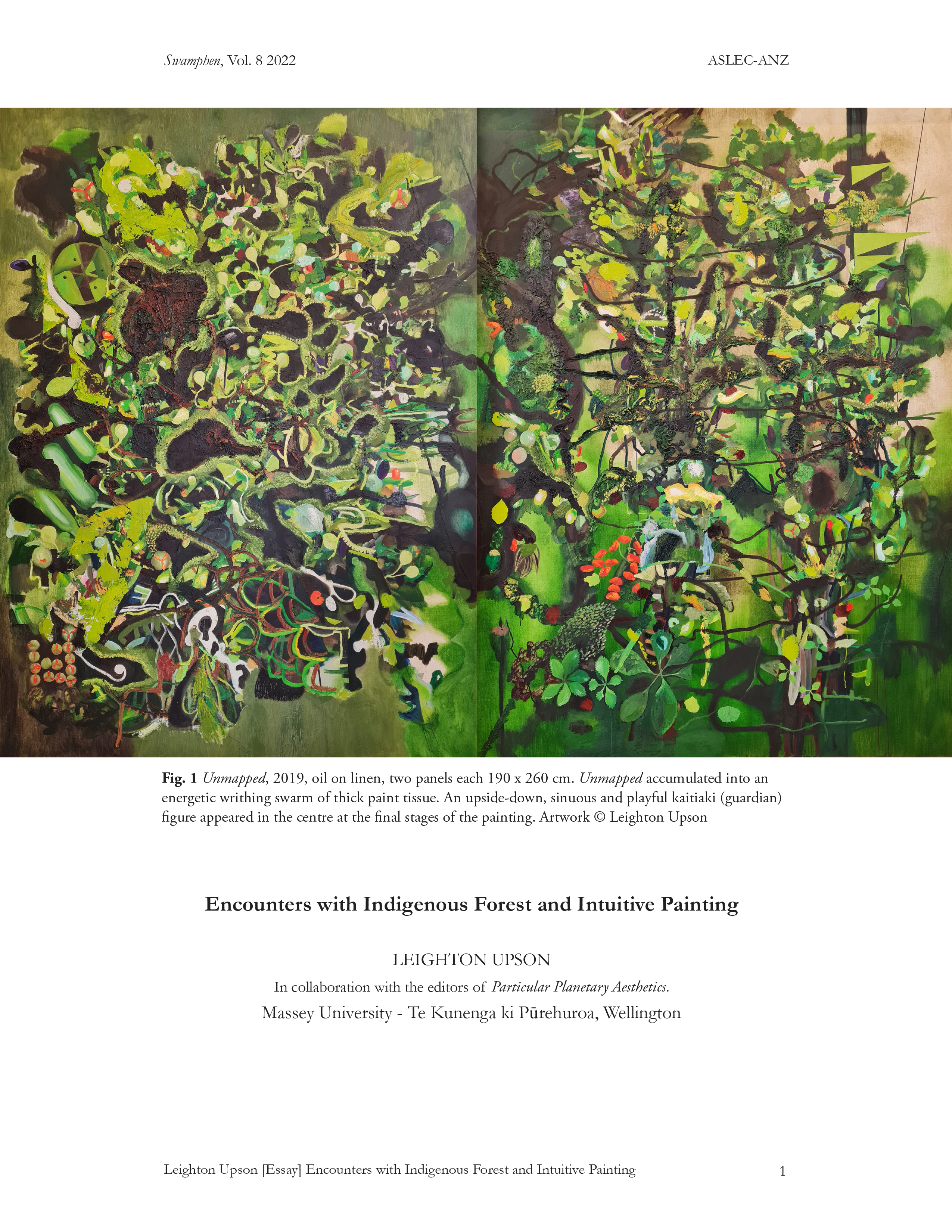Encounters with Indigenous Forest and Intuitive Painting
DOI:
https://doi.org/10.60162/swamphen.8.16689Keywords:
immersive painting, art and kotahitanga, kohekohe trees, Indigenous forest, multispecies connections, forestness, Ngāmotu, New Plymouth, ancestral AotearoaAbstract
Ko te mahinga toi ka hono i te hinengaro, te tinana me te waahi. The practice of art connects mind, body and place. Painting is a great connector of being and place. It can promote strong connection to a particular forest. The process of painting is ideal for thinking with and elaborating an expression of human-plant-life relations. It animates the intensity of every exchange; it is an expression of being with the conditions. Through a painting-based art practice I have become very close to a particular site inside a fragment of an old growth forest named the Rātāpihipihi Scenic Reserve on the edge of Ngāmotu/New Plymouth city. Here, on the west coast of Te Ika-a-Māui, the North Island of Aotearoa New Zealand. It is in this place that I have spent a number of years painting alongside a group of centuries-old kohekohe (Dysoxylum spectabile), pukatea (Laurelia novae-zelandiae) and tawa (Beilschmiedia tawa) trees. Through the materiality and process of painting and being with these trees, I have come to articulate a concept of forestness. It is a deepening of my art practice as kotahitanga: practising “togetherness with forest.”

Downloads
Published
Issue
Section
License
Authors who publish with this journal agree to the following terms:- Authors retain copyright and grant the journal right of first publication with the work simultaneously licensed under a Creative Commons Attribution License that allows others to share the work with an acknowledgement of the work's authorship and initial publication in this journal.
- Authors are able to enter into separate, additional contractual arrangements for the non-exclusive distribution of the journal's published version of the work (e.g., post it to an institutional repository or publish it in a book), with an acknowledgement of its initial publication in this journal.
- Authors are permitted and encouraged to post their work online (e.g., in institutional repositories or on their website) prior to and during the submission process, as it can lead to productive exchanges, as well as earlier and greater citation of published work (See The Effect of Open Access).
